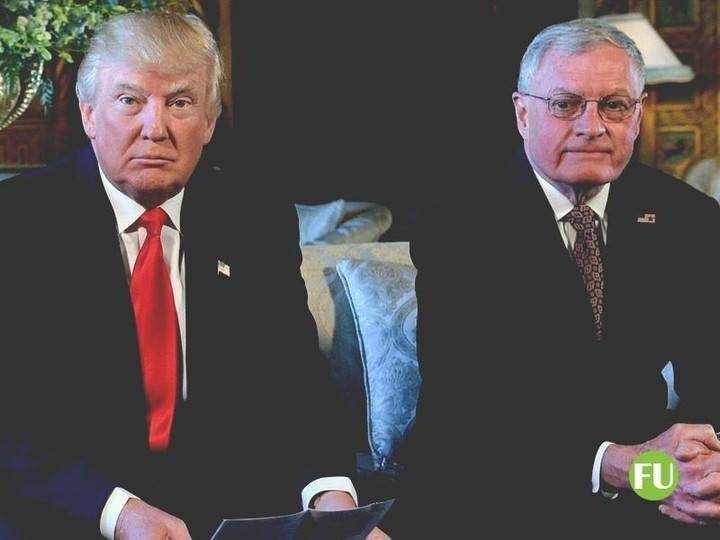How Does Trump Envoy Keith Kellogg Want to End the Russia-Ukraine War? A Comparative Analysis.
The ongoing Russia-Ukraine war has dominated global headlines for nearly three years, reshaping geopolitics and fueling discussions on how best to end the conflict. Among those proposing solutions is Keith Kellogg, a retired U.S. Army Lieutenant General and former National Security Adviser to Vice President Mike Pence during Donald Trump’s first term. Appointed as Trump’s special envoy for the Russia-Ukraine conflict, Kellogg brings a unique perspective on how the war could be concluded.
In this blog post, we’ll explore Kellogg’s plan to end the war in Ukraine and compare it with the strategies outlined by Trump and Ukraine’s President Volodymyr Zelenskyy.
Who Is Keith Kellogg?
Keith Kellogg, now 80 years old, is a seasoned military officer with a distinguished career in both the U.S. Army and U.S. government. A veteran of the Vietnam War, Kellogg’s military experience spans decades, including a key role in the U.S. military’s operations in Iraq after the 2003 invasion. Kellogg was also the chief of staff for the White House National Security Council during the Trump administration from 2017 to 2021.
Kellogg’s background in military strategy and diplomacy positions him as a pivotal figure in shaping U.S. foreign policy. His appointment as a special envoy underscores Trump’s focus on bringing an end to the Russia-Ukraine war, a position that has been central to Trump’s foreign policy platform.
Kellogg’s Plan for Ending the War.
Kellogg’s proposed plan to resolve the Russia-Ukraine conflict is rooted in a strategy of negotiation, diplomacy, and an emphasis on U.S. interests. In a paper co-authored with former U.S. government official Fred Fleitz, published in April, Kellogg argues for an immediate ceasefire and a cessation of hostilities between Russia and Ukraine.
One of the central tenets of Kellogg’s plan is the critique of President Joe Biden’s handling of the war. The paper blames the Biden administration for escalating the conflict by supplying Ukraine with arms and failing to pursue meaningful diplomatic negotiations with Russia. According to Kellogg and Fleitz, the Biden administration's approach has turned the war into a “proxy war†with Russia, potentially leading to prolonged instability in the region. Kellogg’s strategy calls for the U.S. to lead a diplomatic push for a ceasefire, pressuring both sides to halt the fighting and begin negotiations.
Additionally, Kellogg advocates for an "America First" approach to the war. His plan suggests that the U.S. should prioritize its own national interests rather than getting entrenched in a European conflict. This would mean scaling back military support to Ukraine while urging both sides to enter peace talks. Kellogg emphasizes that this strategy would protect American interests, promote stability in the region, and ultimately bring an end to the bloodshed.
How Does Kellogg’s Plan Compare to Trump’s Approach?
Trump’s stance on the Russia-Ukraine war has been clear: he advocates for diplomacy, not war. During his presidential campaigns and throughout his political career, Trump has emphasized his preference for negotiation over military conflict. His administration, which was marked by attempts to reduce U.S. military involvement in overseas conflicts, would likely follow this diplomatic path through Kellogg’s role as special envoy.
Trump’s broader foreign policy platform aligns with Kellogg’s views, as both emphasize the need to avoid direct military intervention while prioritizing U.S. national interests. Trump has previously stated that if he were re-elected, he would aim to negotiate a peace deal between Russia and Ukraine within 24 hours. This “America First†strategy echoes Kellogg’s calls for negotiations without further escalating the war.
While both Trump and Kellogg prioritize peace talks, the Trump administration’s policy would likely involve leveraging U.S. influence and economic pressure to convince both Russia and Ukraine to sit down at the table. This approach contrasts with the more interventionist policies seen under the Biden administration, which has continued to send military aid to Ukraine in the hope of forcing Russia to the negotiating table through battlefield success.
How Does Kellogg’s Plan Compare to Zelenskyy’s Approach?
On the other side of the equation is Ukraine’s President Volodymyr Zelenskyy, whose stance on the war is firmly rooted in maintaining Ukraine’s sovereignty and territorial integrity. Since the start of the conflict, Zelenskyy has rejected the idea of negotiating with Russia unless Moscow withdraws from all occupied Ukrainian territories, including Crimea.
Zelenskyy’s stance reflects a significant contrast with Kellogg’s emphasis on a negotiated ceasefire. While Kellogg advocates for an immediate halt to fighting and a U.S.-led diplomatic initiative, Zelenskyy views any compromise with Russia as unacceptable, especially given the extensive devastation Russia’s invasion has caused. He has also expressed strong support for Ukraine’s eventual accession to NATO, seeing this as a key security guarantee for his country’s future.
This stark difference in approaches underscores the challenges of negotiating a peaceful resolution to the war. While Kellogg’s plan would likely involve significant U.S. diplomatic pressure on both Russia and Ukraine, Zelenskyy’s hardline stance on territorial integrity and NATO membership makes any negotiation process extremely difficult.
Conclusion: A Diplomatic Path Forward?
Keith Kellogg’s appointment as a special envoy for the Russia-Ukraine war highlights Trump’s focus on diplomacy as a solution to the ongoing conflict. His plan to negotiate a ceasefire, scale back U.S. military involvement, and push for a diplomatic resolution contrasts sharply with both the Biden administration’s current approach and Zelenskyy’s firm stance on Ukraine’s territorial integrity.
Whether Kellogg’s strategy will gain traction remains to be seen. However, it offers a fresh perspective in the ongoing debate about how to end the war in Ukraine. The key to a lasting peace may ultimately lie in finding common ground between the various stakeholders, balancing U.S. interests with Ukraine’s sovereignty and Russia’s security concerns.
As the conflict continues to evolve, Kellogg’s diplomatic efforts could play a critical role in shaping the future of U.S.-Russia relations and the broader geopolitical landscape.


